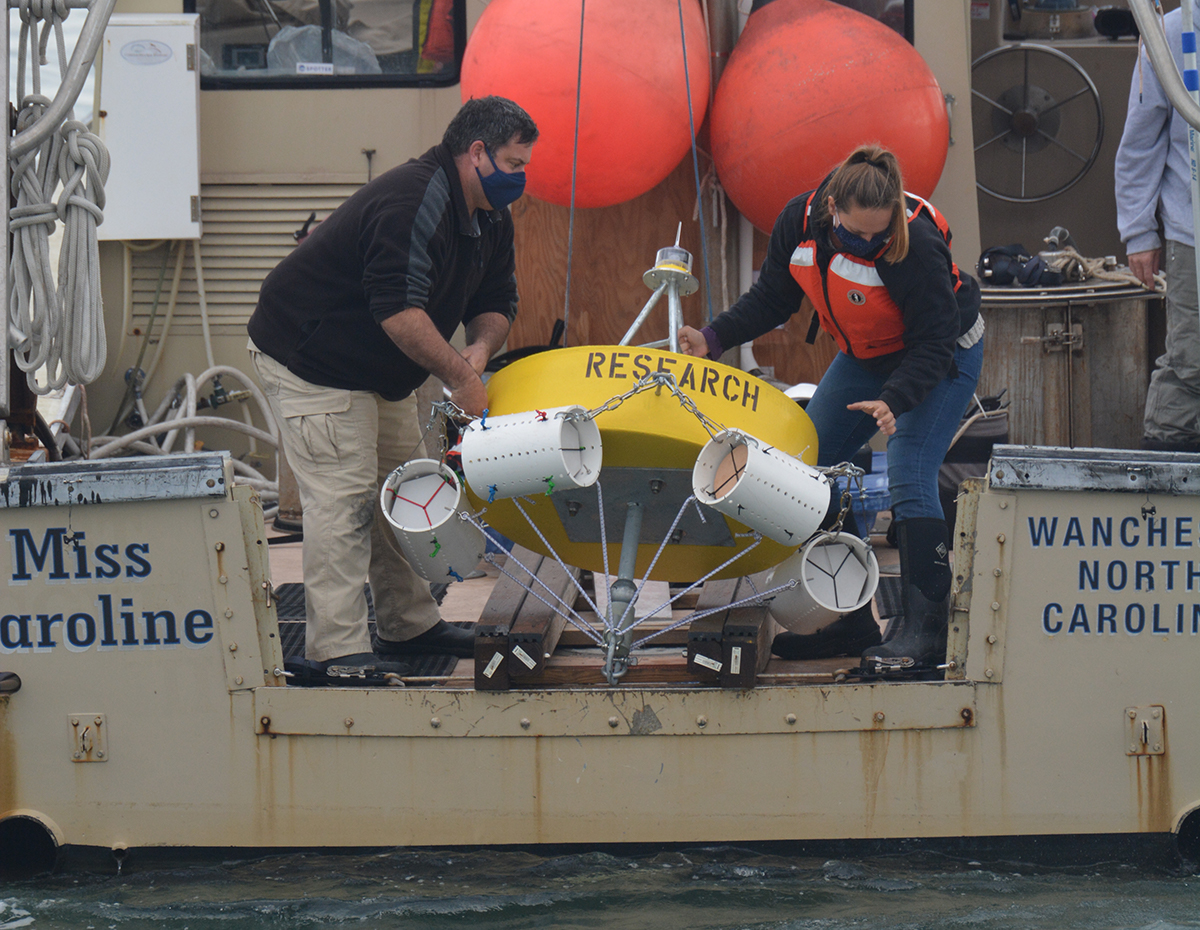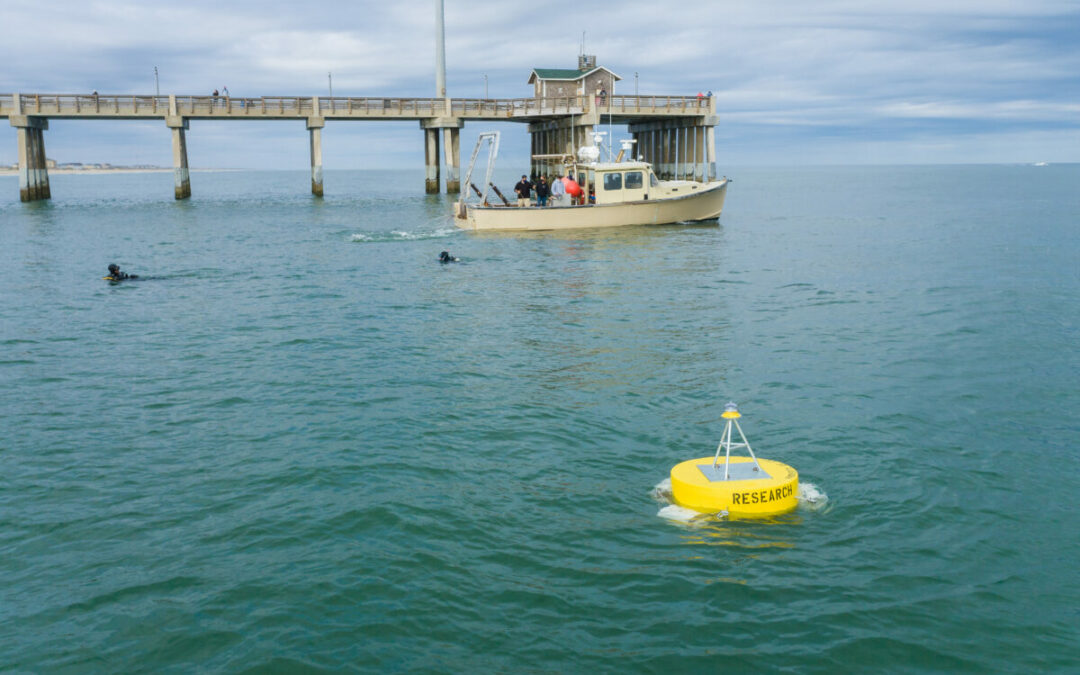A small team of researchers recently took advantage of a stint of beautiful weather on the Outer Banks employing the help of both CSI research vessel Miss Caroline and divers to deploy a buoy off of Jennette’s Pier.
The buoy will stay in place for one month, while members of the Ecology & Biogeochemistry in Marine & Coastal Systems Research Lab group study the biofouling community in the coastal waters of North Carolina. The one-month deployment will serve as a test for the structure and design components of the buoy against the harsh ocean conditions such as currents, wind, and waves. If all holds up well, the buoy will be deployed again but for a much longer period.

Morse and Adams work to place the buoy overboard. Each white PVC cylinder seen on the side contains a set of plates inside which will allow for biofouling species to collect. The cylinder and plates together make up one “housing”; and during the longer deployment, housings will be taken off in succession after a certain amount of time has passed to better understand how biofouling occurs in coastal NC waters. [Photo: Claire Johnson]
The broad goal of their long-term project is to understand what species of smaller organisms live in these waters and their rate of succession, or the order and timing in which they appear. The buoy has four sets of plates, called housings, to which the organisms will likely attach, or biofoul. By knowing what kinds of species live in coastal NC waters and the ways in which they aggregate, researchers with the North Carolina Renewable Ocean Energy Program (NCROEP) can then begin to understand what types of organisms may biofoul renewable energy devices. This will be important insight as the nature of the NCROP test site does not always allow for the easy servicing of devices.
Lab technician Kirsten Morse was especially excited to see the buoy deployed. During her time at CSI and the Ecology & Biogeochemistry in Marine & Coastal Systems Research Lab, it has been her role to research the materials that would be best suited for the buoy system. Not only do the materials need to hold up to the typical wear and tear as a result of the marine environment, but they also need to provide suitable living surfaces for the organisms to attach. Positioning the housings could also play a role in what collects on the plates inside.
Morse explains, “I designed the housings to try to replicate small crevasses or protected areas that might get fouled the worst on ocean energy devices. I also came up with the buoy design so that each housing will be an exact replicate of the others and the only differences we see in the biofouling community should be based on the amount of time it’s in the water, not other external factors such as depth or sunlight.”
Over the holidays and into January, Morse will be responsible for checking on the buoy to make sure the housings are still in place. The lab group extends their thanks to Corey Adams, Mike Muglia, Reide Corbett, and Dave Sybert for their help in deploying the buoy.



 Based at the Coastal Studies Institute (CSI), the North Carolina Renewable Ocean Energy Program (NCROEP) advances inter-disciplinary marine energy solutions across UNC System partner colleges of engineering at NC State University, UNC Charlotte, and NC A&T University. Click on the links below for more information.
Based at the Coastal Studies Institute (CSI), the North Carolina Renewable Ocean Energy Program (NCROEP) advances inter-disciplinary marine energy solutions across UNC System partner colleges of engineering at NC State University, UNC Charlotte, and NC A&T University. Click on the links below for more information. ECU's Integrated Coastal Programs (ECU ICP) is a leader in coastal and marine research, education, and engagement. ECU ICP includes the Coastal Studies Institute, ECU's Department of Coastal Studies, and ECU Diving and Water Safety.
ECU's Integrated Coastal Programs (ECU ICP) is a leader in coastal and marine research, education, and engagement. ECU ICP includes the Coastal Studies Institute, ECU's Department of Coastal Studies, and ECU Diving and Water Safety. The ECU Outer Banks campus is home to the Coastal Studies Institute.
The ECU Outer Banks campus is home to the Coastal Studies Institute.

